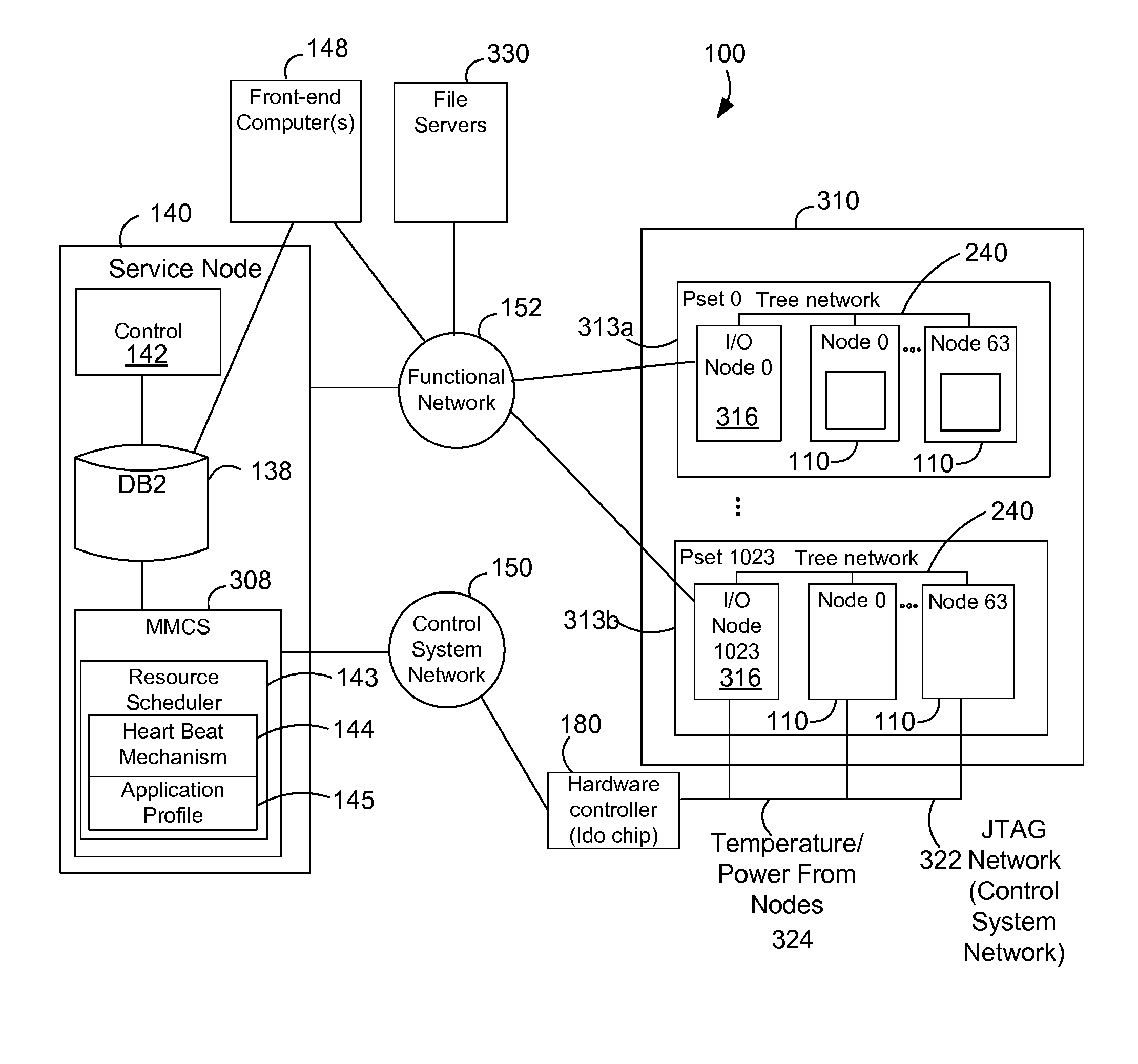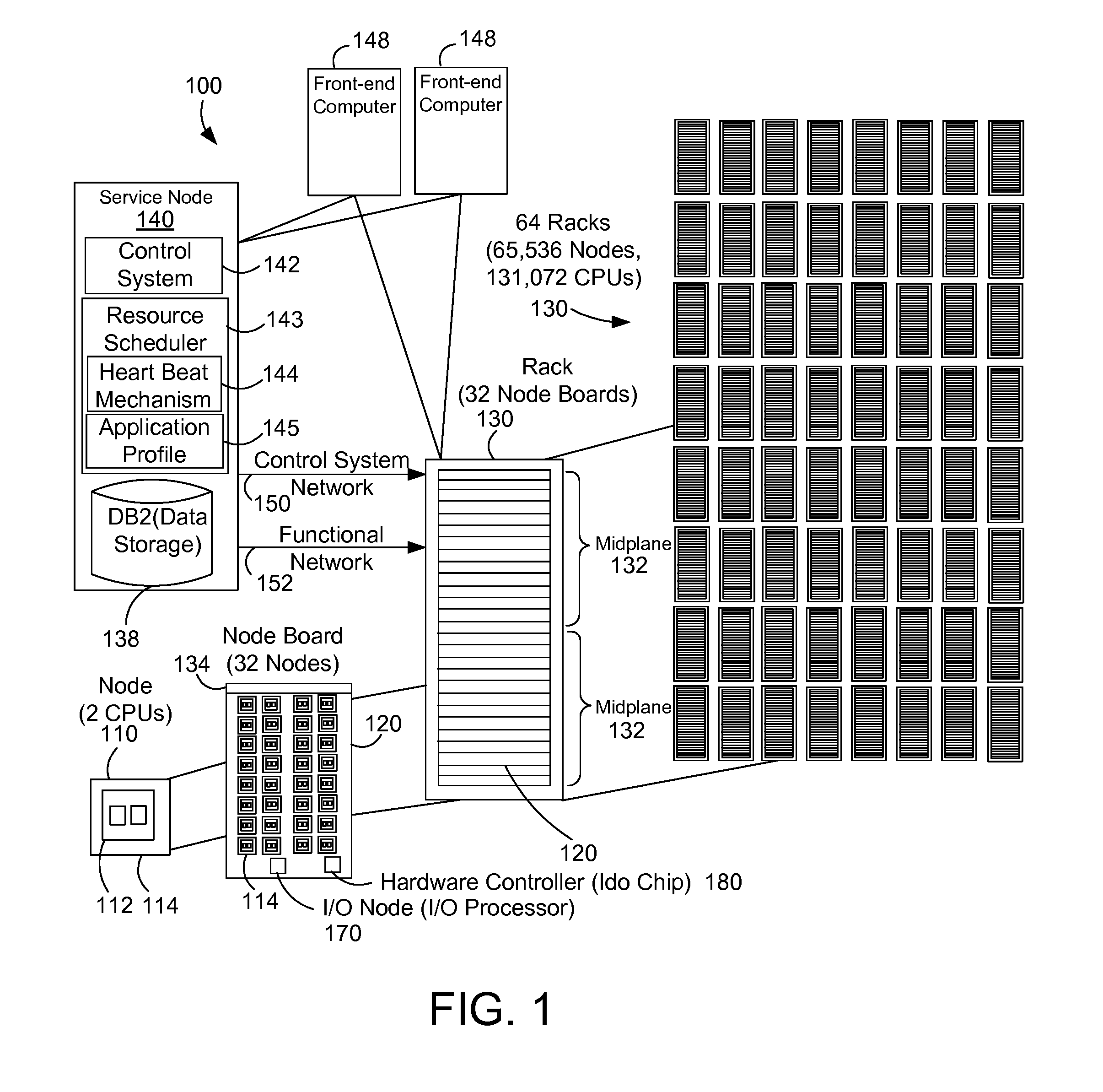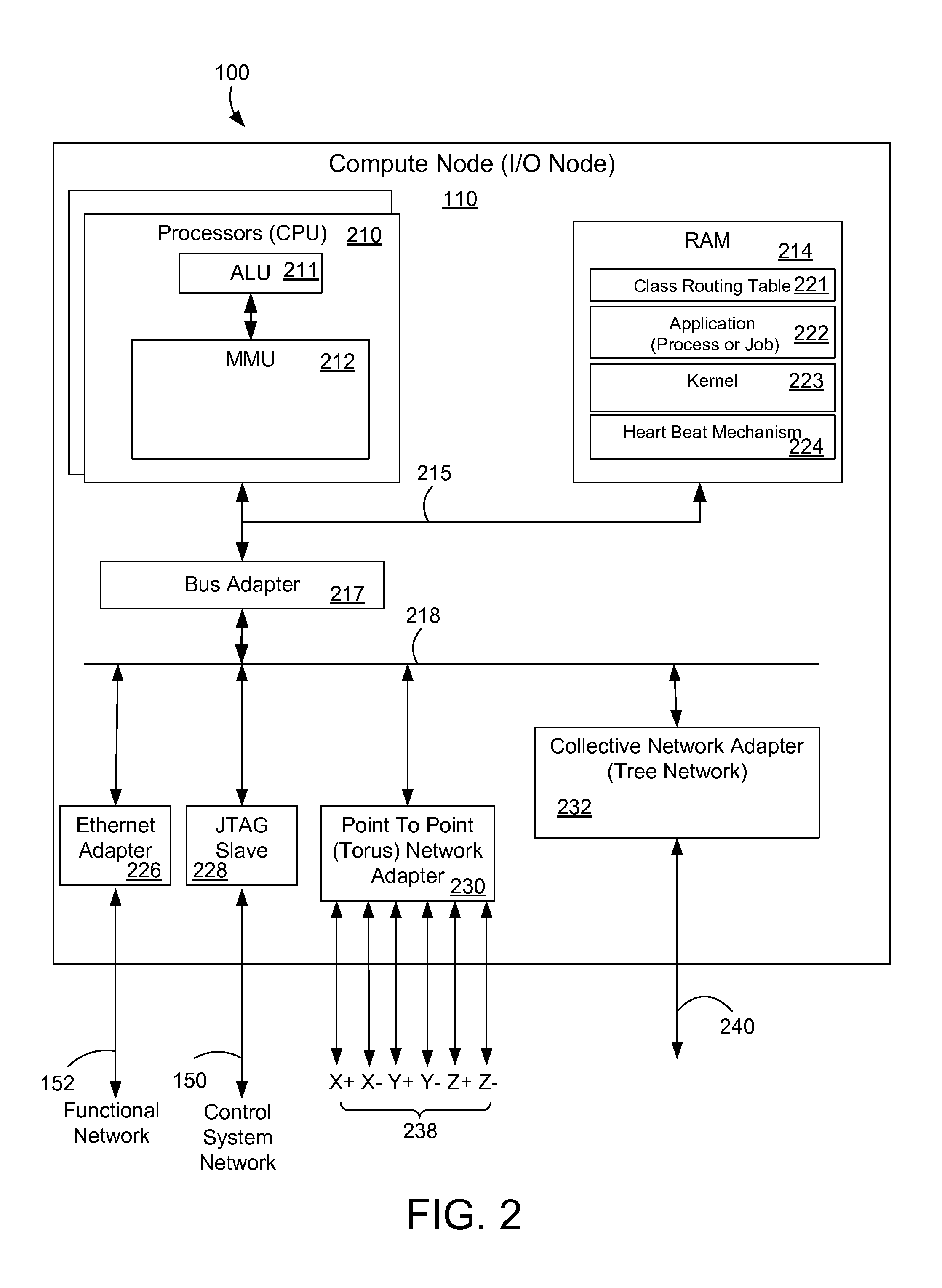Optimizing Power Consumption and Performance in a Hybrid Computer Evironment
a hybrid computer and power consumption technology, applied in the field of hybrid computer environments, can solve the problems of less than optimum use of power, reduced performance of hybrid computer systems, and increased power consumption of hybrid computer systems, and achieve the effect of increasing power consumption and optimizing efficiency and power consumption
- Summary
- Abstract
- Description
- Claims
- Application Information
AI Technical Summary
Benefits of technology
Problems solved by technology
Method used
Image
Examples
Embodiment Construction
[0019]The description and claims herein are directed to optimizing efficiency and power consumption in a hybrid computer system. By building historical profiles of the applications running on the multi-node computer system, the system can analyze the trade offs between power consumption and performance. The examples herein will be described with respect to the Blue Gene / L massively parallel computer developed by International Business Machines Corporation (IBM).
[0020]FIG. 1 shows a block diagram that represents a massively parallel computer system 100 such as the Blue Gene / L computer system. The Blue Gene / L system is a scalable system in which the maximum number of compute nodes is 65,536. Each node 110 has an application specific integrated circuit (ASIC) 112, also called a Blue Gene / L compute chip 112. The compute chip incorporates two processors or central processor units (CPUs) and is mounted on a node daughter card 114. The node also typically has 512 megabytes of local memory ...
PUM
 Login to View More
Login to View More Abstract
Description
Claims
Application Information
 Login to View More
Login to View More - R&D
- Intellectual Property
- Life Sciences
- Materials
- Tech Scout
- Unparalleled Data Quality
- Higher Quality Content
- 60% Fewer Hallucinations
Browse by: Latest US Patents, China's latest patents, Technical Efficacy Thesaurus, Application Domain, Technology Topic, Popular Technical Reports.
© 2025 PatSnap. All rights reserved.Legal|Privacy policy|Modern Slavery Act Transparency Statement|Sitemap|About US| Contact US: help@patsnap.com



